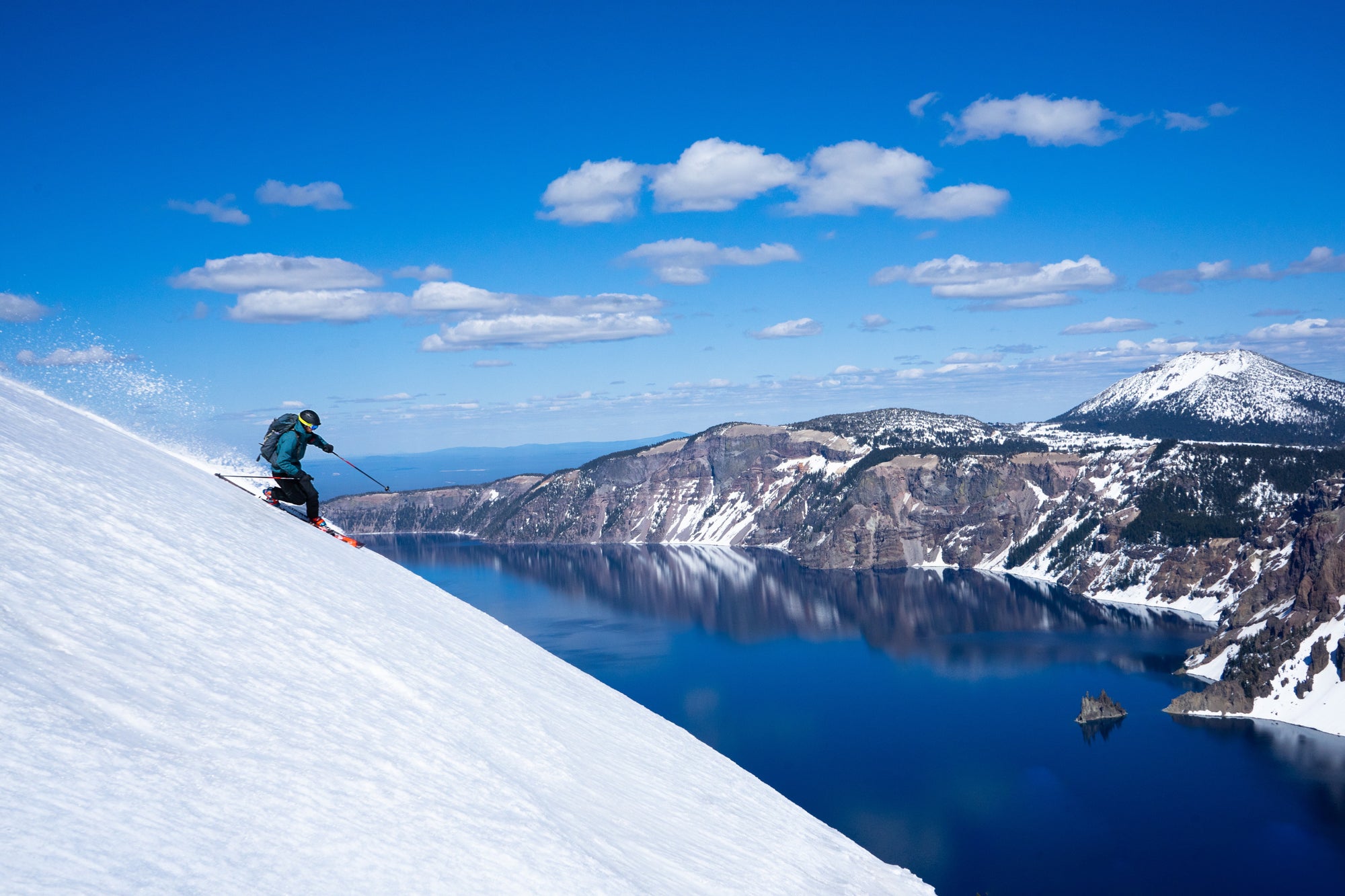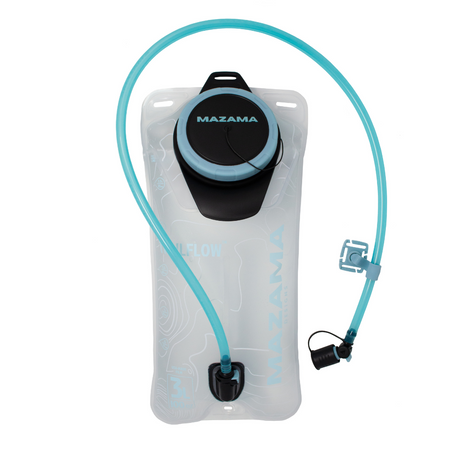Backcountry Ski Gear Care: How to Minimize Risk and Make Your Gear Last Longer
January 24 2022 – Matt Hoskins

With winter in full swing, you’re making the most of it. Big storms, powder days, and those perfect bluebird skies practically beg us to head outside.
Having your gear ready to go and in good working condition is important for all outdoor activities, especially during the winter. As a hydration system supplier, we at Mazama Designs are all about preparing for safe and enjoyable excursions — because what’s winter without all the snowy adventures?
Outdoor enthusiasts know backcountry skiing and other winter activities come with a level of risk brought on by bad weather, rough terrain, or remote settings. But to many, the reward — incredible powder skiing — is worth the necessary preparation.
Read on to learn how to care for your winter gear so that you can take full advantage of the winter season.

What Happens When Your Gear Fails
If you spend a lot of time outdoors, you’ve probably had to improvise at one point or another. Maybe you lost a tent stake or ripped a hole in your rain jacket. You might even take pride in your resourcefulness, using what you’ve got (usually duct tape) to fix your problem.
But when it comes to backcountry skiing, you don’t want to count on “good enough.” Using faulty gear can lead to some dangerous situations. Damaged gear can:
- Cause or contribute to an injury. For example, neglecting to care for your bindings could cause them to fail at high speeds.
- Prevent you from making a safe and timely return to the trailhead. You could be out longer than expected and or be forced to use extraordinary physical effort to get back.
- Limit your ability to make the most of your outing. You might have to sacrifice performance, efficiency, or enjoyment.
While returning late to the trailhead or having a less-than-perfect day don’t sound like the worst things, these are some examples of minor repercussions of using faulty gear. To avoid these consequences — and the more serious ones — it’s critical to keep your gear in great shape.
How to Maintain Your Gear
Backcountry skiing involves using a lot of gear — and therefore maintaining a lot of gear. To cover the basics, you’ve got:
- Bindings
- Boots
- Skis
- Skins
- Poles
- Pack
- Avalanche and safety gear
- Hydration system
- Clothing
With all of these things to care for and maintain, it might seem like you’ll never have time to get out and ski. But by maintaining all of this gear throughout the year — not just when it’s broken — you can spend minimal time indoors and take full advantage of the winter season.
Preseason Care
As ski season approaches and you’re eagerly awaiting that first powder dump, take an afternoon to work your way through this pre-season gear maintenance checklist:
- Bindings: Check your bindings and boot connection, tighten any loose screws, and double check release settings.
- Boots: Tighten any loose boot buckles and adjustment controls.
- Skis: Remove storage wax, re-wax as needed, and sharpen ski edges.
- Skins: Check skins’ front bracket and rear hook.
- Poles: Check your poles and tighten up any loose levers.
- Pack: Organize your pack contents, replace or replenish any missing safety essentials including extra food, emergency blanket, compass, firestarter, whistle, maps, flashlight, multi-tool, repair kit, and first aid kit.
- Shovel and avy probe: Check that both are functioning correctly
- Avy and safety gear: Power up and test your beacon with fresh batteries. Test your avalanche bag operation and backcountry communicator.
- Hydration system: Rinse and test your hydration system. Check connections and seams for any leaks. Mazama's manufacturing checks include testing our reservoirs for 1) short-term leaks under load and 2) slow leaks over time. To do these at home: 1) fill and stand on your reservoir for a few minutes and watch for leaks 2) fill your reservoir and leave it overnight (in a pan) to test for passive leaking.
With these steps out of the way, routine checks throughout the season should be quick and easy.

Before You Head Outside
When the snow does fall, it can be tempting to grab all your gear and go. But even first tracks aren’t worth the risk of heading out without checking your gear. Each time you head for the mountains, take time to prepare by doing the following:
- Choose clothing and extra layers appropriate for the conditions and your activity level.
- Check the contents of your backpack and pack any extras.
- Fill your hydration reservoir or bottle. Check that caps are tight and that the mouthpiece is operating correctly.
- Pre-mount your skins.
- Check your beacon.
- Make sure phone and/or backcountry communicator is charged.
- Charge up your air bag if you have a fan-based model, or confirm your air cylinder is full if you have a compressed air model.
As always, do a final gear check on your way out the door. Put eyes on your skis, poles, boots, helmet, goggles, gloves, avy gear, and hydration.
While Skiing
Precaution and preparedness don’t end with your pre-ski checklist. Take care when you’re in the mountains to treat your gear well and minimize any risks.
- When you stop for transistions or breaks after skinning and are removing your skis--activate your ski brake as soon as you're out of each binding. If you are stopping, make sure your skis (and other gear) are safely anchored. You don't want to have to chase down a ski and it could end up lost or damaged.
- Take care of your skins during transitions. When you’re ready to ski, shake or scrape snow off of your skins before storing them— folded, with glue sides together — in your pack.
- Clean excess snow from your bindings during transitions.
- Respect the strength-to-weight ratio of your gear.
- Ski where the coverage is good and watch for rocks, stumps, and trees that can damage your skis.
- Ski with a friend — it’s always safer than skiing solo.
Throughout the season, periodically check bindings, tighten screws and lubricate as necessary.

After Skiing
After an epic day in the mountains — and perhaps after an apres beer — take a few minutes to check these post-ski to-do’s off your list. Your gear will thank you, and you’ll have less to do before the next powder day.
- Check that your beacon and any other electronics are powered down
- Wipe down and dry your skis and bindings. Let them dry with bindings facing down (leaning on a bench, for example) so water can drip out.
- Dry your boots by removing the liners and, if necessary, wiping down the shells with a dry rag.
- Dry your skins by hanging them over a rod or dowel before folding them up.
- Hang-dry your gloves, hat, neck gaiter, and jacket.
Postseason Care
The end of ski season often comes too soon, but with spring and summer come the joys of mountain biking, hiking, and climbing. Before you unpack your summer gear, take the following steps to ensure your ski gear is stored properly. Winter will be here again before you know it, and the better care you take now, the less work you’ll have when the snow starts falling again.
- Bindings: Clean, dry, and lubricate your bindings with a silicone or synthetic lubricant.
- Boots: Buckle up your boots for storage.
- Skis: Clean and dry your skis and apply storage wax.
- Skins: Make sure your skins are clear of dirt and dust. Apply glue savers, fold the skins up, and store them in a dry, cool place.
- Poles: Clean and dry your poles.
- Pack: Empty your ski pack and transfer year-round supplies to your summer hiking or biking pack.
- Avy and safety gear: Remove batteries from your beacon, inspect your avalanche airbag, and restock any first aid supplies.
- Hydration system: Clean and dry your hydration reservoir, and keep it accessible for summer use.
- Clothing: Wash your winter clothing and store it until next season.
Store all your winter gear in a temperature-controlled, non-corrosive environment. This means not in your car’s rooftop storage box or the backyard shed. Remember, the better you care for your gear year-round, the less you’ll have to do when the snow starts falling and all you want to do is ski.
Take Care of Your Gear This Winter… and Beyond
Any outdoor pursuit requires a careful balance of risk and reward. When you can take the steps to minimize your risk, you can spend more time chasing adventures outside. Be sure and check weather reports and avalanche risk in your area (if you're Bend, and we hope you are--visit Central Oregon Avalanche Center's website for the latest forecast and observations: www.coavalanche.org)
With a little work, forethought, and preparedness, you can make sure your gear is in tip-top shape throughout the season — meaning more time in the snow, doing what you love.

